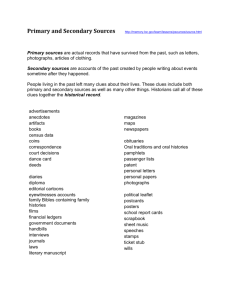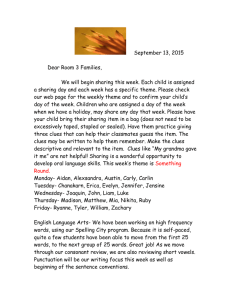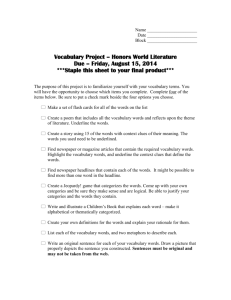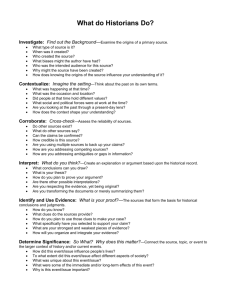b) prompts 6-9 - CommonCoreBiology.com
advertisement
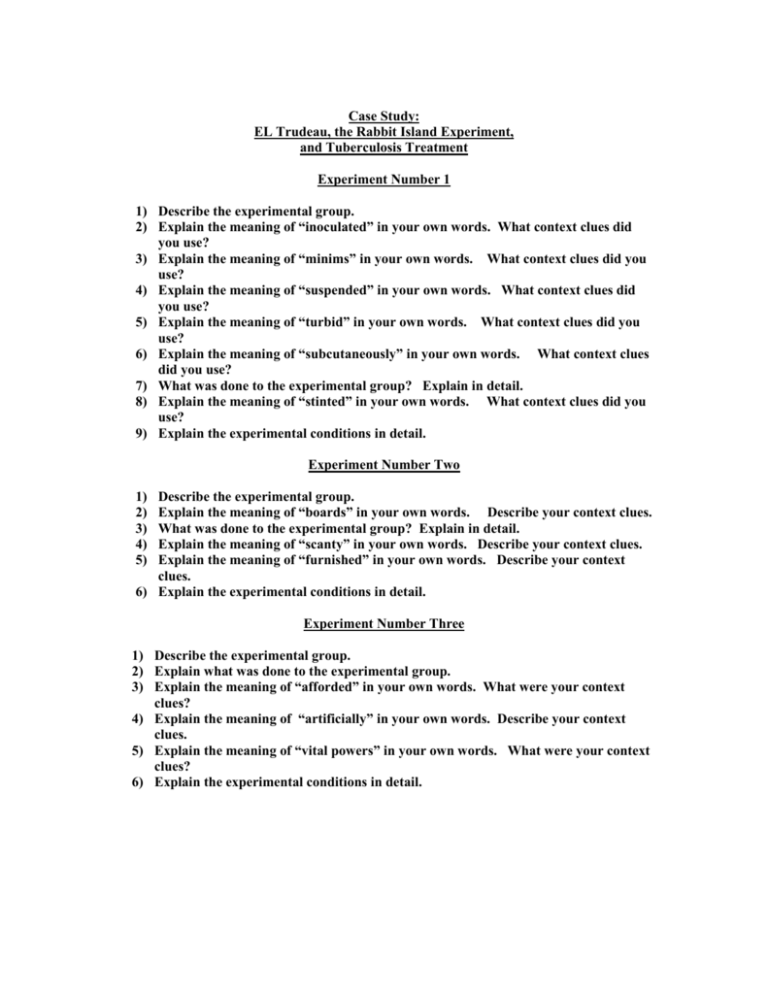
Case Study: EL Trudeau, the Rabbit Island Experiment, and Tuberculosis Treatment Experiment Number 1 1) Describe the experimental group. 2) Explain the meaning of “inoculated” in your own words. What context clues did you use? 3) Explain the meaning of “minims” in your own words. What context clues did you use? 4) Explain the meaning of “suspended” in your own words. What context clues did you use? 5) Explain the meaning of “turbid” in your own words. What context clues did you use? 6) Explain the meaning of “subcutaneously” in your own words. What context clues did you use? 7) What was done to the experimental group? Explain in detail. 8) Explain the meaning of “stinted” in your own words. What context clues did you use? 9) Explain the experimental conditions in detail. Experiment Number Two 1) 2) 3) 4) 5) Describe the experimental group. Explain the meaning of “boards” in your own words. Describe your context clues. What was done to the experimental group? Explain in detail. Explain the meaning of “scanty” in your own words. Describe your context clues. Explain the meaning of “furnished” in your own words. Describe your context clues. 6) Explain the experimental conditions in detail. Experiment Number Three 1) Describe the experimental group. 2) Explain what was done to the experimental group. 3) Explain the meaning of “afforded” in your own words. What were your context clues? 4) Explain the meaning of “artificially” in your own words. Describe your context clues. 5) Explain the meaning of “vital powers” in your own words. What were your context clues? 6) Explain the experimental conditions in detail. Case Study: EL Trudeau, the Rabbit Island Experiment, and Tuberculosis Treatment 6) a) What is the dependent variable in the Rabbit Island Experiment? Explain why this is the dependent, and not the independent variable. b) What are the units for this dependent variable? c) Explain how this dependent variable is measurable. 7) a) What are the independent variables in the Rabbit Island Experiment? Explain why these variables are independent variables, rather than dependent. b) State the units for each independent variable. c) Choose two independent variables, and explain how each is measurable. 8) Scientists like to keep all conditions constant, and vary only one. Varying one parameter at a time makes it easier to analyze the results. a) Select any one of the two measurable independent variables. State your Experimental Question. In other words, state exactly what you are trying to determine. b) Make your HYPOTHESIS Statement. First, read and understand the example below which will help you understand the purpose of a hypothesis, and the important “IF-THENMAY” format of your Hypothesis Statement. Example Hypothesis Statement: IF premium gas (93% octane) is used for 60 days, THEN the average MPG MAY increase by five miles-per-gallon per full tank of gas. c) Let “Survival/Days” be your dependent variable. The length of survival “depends upon” the magnitude of each independent variable. i) Construct an experiment based on your Hypothesis Statement in which you keep the value one independent variable constant, and vary the magnitude of the other. Identify all units. Explicitly state which is constant, and which will vary, and why you chose this combination, rather than the inverse. ii) State what you believe to be each of the possible outcomes of your experiment. Explain why in each case. d) Construct two “Survivorship Plots.” In both plots, the dependent variable will be represented on the Y-axis. Use neatly labeled charts to organize the information in your responses to these prompts. i) What are the units of your dependent and independent variables? ii) Determine the value for each individual square on the Y-axis. iii) Determine the value for each invdividual square on the X-axes. iv) Determine what will be the maximum and minimum values on the Y-axis. v) Determine what will be the maximum and minimum values for the X-axes. 9) Let’s say you were the Mayor of New York City in the late 1890s/early 1900s and Dr. Trudeau’s experiments convinced you that a transmissible bacterium was causing tuberculosis, and that poor living conditions and inadequate diet were adversely affecting the ability of many people to fight the infection. a) What types of public health policies might you try to enact in order to combat this public health menace? Explain your reasoning. b) What obstacles might you encounter? Explain your reasoning.



